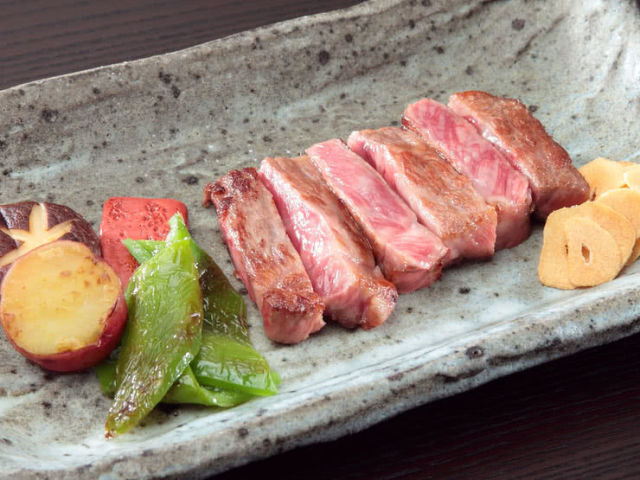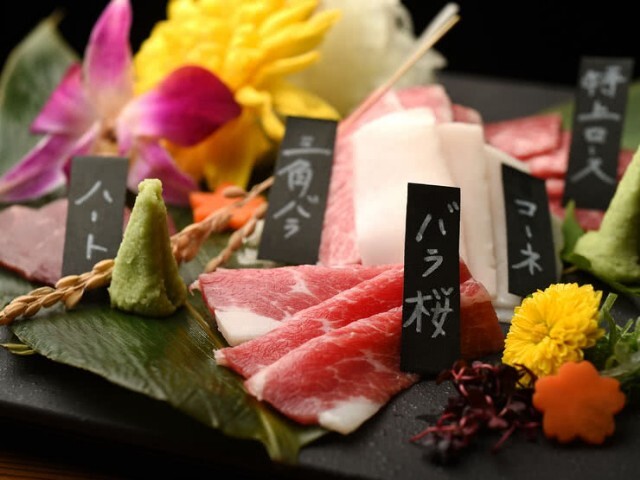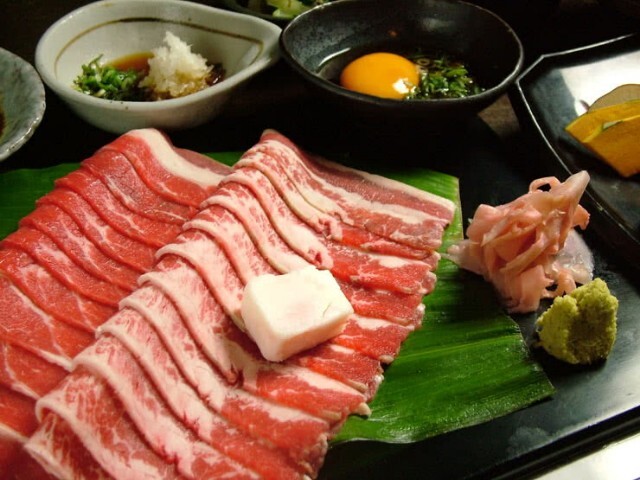![7 Best Tonkatsu Restaurants in Tokyo: A Cutlet above the Rest]()
>Japan’s quintessential fried cuisine tonkatsu reflects a savory heritage of East and West. In short, tonkatsu is a pork chop or cutlet; but unlike its cousin of French origin, this essential Japanese dish boasts a crisper texture and is often served with condiments not readily found on European tables. If you are looking to sample the best tonkatsu in Tokyo, look no further than these seven restaurants.
Continue reading 7 Best Tonkatsu Restaurants in Tokyo: A Cutlet above the Rest
![6 Delectable Japanese Beef Dishes from Gyutan to Hambagu]()
>Meat is not originally part of the Japanese staple diet, and thus was—and still is—considered a luxury among Japanese people. Steak and beef culture in Japan is quite recent, occurring only after Western culture itself swept through the country during the Meiji era just 140 years ago.
Then as now, the Japanese constantly strive for excellence and everything they do, and the quality of their meat is no exception. The world-famous wagyu, or literally Japanese beef, is coveted for the amazing marbling it has as well as a deep flavor quite unlike any other meat. There are different types of wagyu, graded according to their yield and quality, with Kobe beef, Matsuzaka beef, and Omi beef commonly known as “the top 3.” Of course, the world of Japanese beef dishes isn’t limited to wagyu. From steak to teppanyaki and beyond, let’s look at six wonderful ways to serve Japanese meat.
Continue reading 6 Delectable Japanese Beef Dishes from Gyutan to Hambagu
![Tokyo Sukiyaki Restaurant Guide: 9 Simmering Hot Pot Havens]()
>Sukiyaki may be well-known as a popular anglicized version of a Japanese-language song in the ‘60s, but it really refers to a Japanese hot pot dish of thinly-sliced beef that is slowly simmered in a sweet broth of soy sauce, sugar and mirin. It evolved to its current form during the Meiji era, or late 19th century, when the consumption of meat and eggs became more widespread. The sliced marbled beef, when cooked, is usually dipped in raw egg before being slurped up. Other ingredients include tofu, vegetables such as carrots, leek and cabbage, and konnyaku noodles made of konjac. Sukiyaki is usually eaten during winter as a year-end or new-year treat, and is a popular choice as the whole family gathers around a simmering iron pot and partakes from it in a convivial setting. Once you learn about these 9 Tokyo sukiyaki restaurants, you’ll surely want to be right there beside them.
Continue reading Tokyo Sukiyaki Restaurant Guide: 9 Simmering Hot Pot Havens
![Best Thai Restaurants in Tokyo and What to Eat There]()
>Tokyo’s first Thai restaurant, Chiang Mai, opened in the Yurakucho area in 1979. In those days, not many people in Japan were familiar with Thai food and it was difficult for the restaurant to source authentic ingredients from Thailand. But the Japanese owner, who worked at the consulate and wanted to be able to enjoy Thai food in Japan, is said to have used his connections to get the necessary ingredients, and the restaurant soon became a popular lunchtime spot among office workers in the Marunouchi, Yurakucho, and Ginza areas. While Chiang Mai closed its doors after roughly 30 years, the popularity of Tokyo Thai restaurants has continued to grow and grow. Read on for some of the most popular Thai food in Japan, and some of the best Thai restaurants in Tokyo at which to enjoy it.
Continue reading Best Thai Restaurants in Tokyo and What to Eat There
![Robatayaki: Japan’s Lesser-Known But Unmissable Grilled Dining]()
>Translating literally to “fireside cooking,” robatayaki is a traditional style of coal grilling that originated in Hokkaido, the northernmost prefecture of Japan. It is a rustic style of cooking, where food is grilled over an irori, a sunken hearth that once featured in many Japanese houses. Due to the harsh winters of the Hokkaido region, robatayaki was both a way of cooking and of keeping warm. Robatayaki - or simply “robata” - restaurants these days typically feature a large irori hearth or grill around which chefs cook.
Standard robatayaki grilling fare includes skewered meat, vegetables, and seafood, all cooked at high temperatures over 1000 F (about 540 C), which helps preserve the natural flavors and juices of the food. Grilled food is then scooped up and delivered to customers on a long wooden paddle. The theatrical element of robatayaki, combined with the homey presentation and wide selection of custom-order ingredients make it a popular evening dining option in Japan.
Continue reading Robatayaki: Japan’s Lesser-Known But Unmissable Grilled Dining
![Best Kyoto Yakiniku Restaurants: 6 Sizzling Establishments]()
>In the eternal city of Kyoto, yakiniku is a staple option available at popular dining venues, from the enchanting Ponto night district to the tradition-filled alleys of Gion and dining establishments by the Kamogawa river. Yakiniku, which literally means “grilled meat,” is one of the most popular types of cuisines in modern Japan. A sizzling yakiniku meal is considered a treat and is often associated with special occasions, such as birthdays or celebrations of events. Many Kyoto yakiniku restaurants are mid- to upscale dining establishments that pride themselves on serving good cuts of domestically-reared wagyu beef.
Meat makes up most of the meal, but salads and pickles such as various forms of kimchi are popular sides. The common availability of kimchi and Korean stews is a nod to the Korean origins of yakiniku in Japan. A wide range of standards dips, such as soy sauce and garlic-flavored soy sauce, as well as other original sauces specific to each restaurant, are part of the enjoyment as guests grill the meat to their preference and vary the condiments. Some restaurants provide charcoal grills while others provide gas or electric grills. Covers for diners’ bags, coats and clothes so they can enjoy the meal without bringing the scent of grilled meats with them home, and good ventilation is provided so the interior is surprisingly smoke-free. Here are some restaurants showcasing the very best yakiniku in Kyoto.
Continue reading Best Kyoto Yakiniku Restaurants: 6 Sizzling Establishments
![13 Exquisite French Restaurants in Tokyo]()
>It’s a well-known fact that the Japanese have a deep appreciation for all things French—fashion, interior design, art—and food is no exception. French food is one of the most popular international cuisines in Tokyo, Japan’s metropolitan dining capital, and offers everything from starred French dining to crêperies and small neighborhood cafés. Read on for 13 of Tokyo’s finest French restaurants.
Continue reading 13 Exquisite French Restaurants in Tokyo
![10 Italian Restaurants in Tokyo for Authentic & Inventive Dining]()
>Japan has long had an interest in Italian cuisine, dating back to the Meiji period when Italian “inspired” dishes like Napolitan spaghetti first became popular. In recent decades the focus has shifted from these reinterpretations of Italian dishes to more authentic Italian flavors and techniques. Beyond just flavor, the appeal of Italian food to Japanese chefs and diners may also be attributed to Italian cuisine’s emphasis on the heritage of food, the flavor of a mother’s cooking, and the use of locally grown and seasonal ingredients, which are also foundations of Japanese cuisine.
Continue reading 10 Italian Restaurants in Tokyo for Authentic & Inventive Dining
![Where to Eat Kaiseki in Tokyo]()
Kaiseki dining is Japan’s traditional haute cuisine, a tasting course of small, elegant dishes precisely prepared to evoke the flavors and imagery of the season. While Kyoto is the birthplace of kaiseki, Tokyo, with its world-class dining offers its own inimitable kaiseki dining scene, influenced by the cooking styles of various regions across Japan. Here are 11 must-try kaiseki restaurants from Japan’s metropolitan capital city.
Continue reading Where to Eat Kaiseki in Tokyo
![Yakiniku in Osaka - 9 Restaurants for Succulent Grill-Your-Own Meat]()
Yakiniku is a Japanese meal of grilled (“yaki”) meat (“niku”), and most often involves diners cooking meat around a grill on a table front of them. Adopted from Korean cuisine, yakiniku became widespread throughout Japan in the 20th century. Oftentimes yakiniku restaurants have other dishes that people can order, but the meats and sauces are the main components to a yakiniku experience. The grilled meat is then dipped by the customer in sauce and eaten. The sauce for these dishes oftentimes can be savory and sweet, but other flavor combinations such as sour and spicy can be added as well. The flavor of the sauce depends on the restaurant, and the variety of sauces at yakiniku restaurants can be a reason for someone to visit many of them. Osaka, historically a mercantile city located in the south-central region of Japan's main island, is a place that has many fantastic yakiniku restaurants for residents and travelers to enjoy--read on to discover some of these!
Continue reading Yakiniku in Osaka - 9 Restaurants for Succulent Grill-Your-Own Meat











